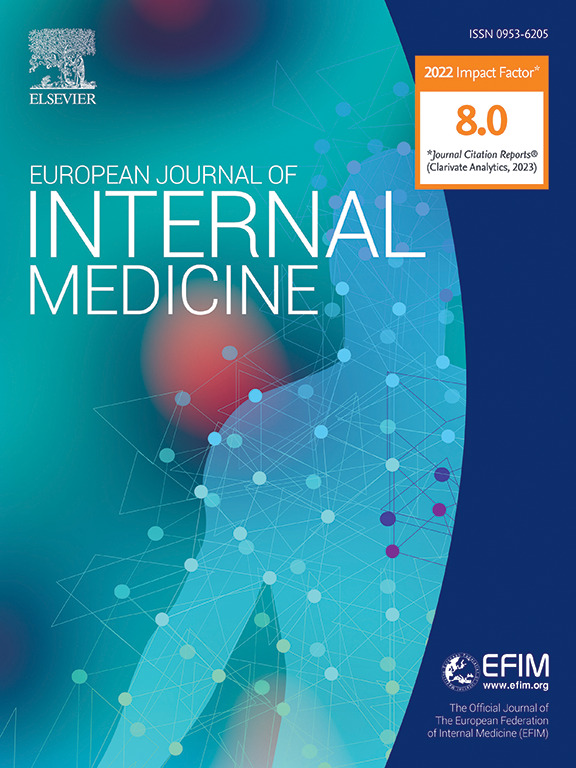癌症基因特征和血栓形成风险。
IF 5.9
2区 医学
Q1 MEDICINE, GENERAL & INTERNAL
引用次数: 0
摘要
肿瘤相关血栓形成(CAT)仍然是肿瘤患者发病和死亡的主要原因,其发病率受肿瘤类型、分期、治疗和分子特征的影响。这篇综述探讨了癌症中静脉血栓栓塞(VTE)的分子决定因素,强调其病理生理学和与特定致癌改变的关联。某些分子特征表现出静脉血栓栓塞风险增高。在肺癌中,由于与组织因子过表达相关的高凝机制,在ALK(30- 40%)和ROS1重排(34.7- 46.6%)的人群中,VTE的发病率增加。在胃肠道癌症中,虽然胰腺腺癌的VTE发生率最高(高达22%),但KRAS突变似乎与之有关,但尚未得到最终证实。同样,结直肠癌突变(KRAS/BRAFV600E)和抗血管生成治疗可能会增加血栓形成风险,值得进一步研究。高级别胶质瘤,特别是胶质母细胞瘤,由足多planin诱导的血小板聚集导致静脉血栓栓塞率高达30%。IDH1突变与血栓形成呈负相关,突出了其保护作用。新出现的证据表明,STK11突变等不可知的生物标志物会影响各种肿瘤类型的静脉血栓栓塞风险,而KRAS、MET和BRCA突变等其他生物标志物的结果尚无定论。大规模的验证研究是必要的整合分子概况到临床实践。在此之前,管理决策应个体化,平衡血栓形成风险与肿瘤的考虑。本文章由计算机程序翻译,如有差异,请以英文原文为准。
Cancer genetic profile and risk of thrombosis
Cancer-associated thrombosis (CAT) remains a leading cause of morbidity and mortality among oncology patients, with an incidence influenced by tumor type, stage, treatment, and molecular characteristics. This review explores the molecular determinants of venous thromboembolism (VTE) in cancer, emphasizing its pathophysiology and association with specific oncogenic alterations.
Certain molecular profiles exhibit heightened VTE risk. In lung cancer, due to hypercoagulability mechanisms linked to tissue factor overexpression, an increased incidence of VTE has been reported in populations with ALK (30–40 %) and ROS1 rearrangements (34.7–46.6 %). In gastrointestinal cancers, while pancreatic adenocarcinoma has the highest VTE rates (up to 22 %), KRAS mutations seem to be implicated but not conclusively validated. Similarly, colorectal cancer mutations (KRAS/BRAFV600E) and antiangiogenic therapies may elevate thrombotic risk, warranting further study.
High-grade gliomas, particularly glioblastomas, present VTE rates up to 30 %, driven by podoplanin-induced platelet aggregation. IDH1 mutations inversely correlate with thrombosis, highlighting its protective role. Emerging evidence suggests that agnostic biomarkers such as STK11 mutations influence VTE risk across tumor types, while others like KRAS, MET and BRCA mutations show inconclusive results. Large-scale validation studies are imperative to integrate molecular profiles into clinical practice. Until then, management decisions should be individualized, balancing the thrombotic risks with oncologic considerations.
求助全文
通过发布文献求助,成功后即可免费获取论文全文。
去求助
来源期刊
CiteScore
9.60
自引率
6.20%
发文量
364
审稿时长
20 days
期刊介绍:
The European Journal of Internal Medicine serves as the official journal of the European Federation of Internal Medicine and is the primary scientific reference for European academic and non-academic internists. It is dedicated to advancing science and practice in internal medicine across Europe. The journal publishes original articles, editorials, reviews, internal medicine flashcards, and other relevant information in the field. Both translational medicine and clinical studies are emphasized. EJIM aspires to be a leading platform for excellent clinical studies, with a focus on enhancing the quality of healthcare in European hospitals.

 求助内容:
求助内容: 应助结果提醒方式:
应助结果提醒方式:


